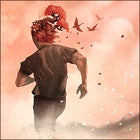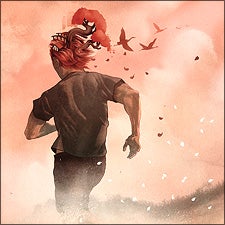I DON’T LIKE TO RUN. IT’S HARD, IT HURTS, and a little voice often asks why I’m running when I could be riding a bike. Still, I keep doing it. Running boasts an elegant simplicity that, in today’s gear-laden and time-intensive sporting world, I’ve come to appreciate. What’s more, I like the sport’s democratic nature and ease of access the only thing required is a pair of cushioned shoes and a little free time. In fact, my only real complaint is feeling like I’ve been ground through a pasta mill every time I finish a long slog.
Lab Rat Tested
Want a training tool tested? Email us with your ideas. And read past columns at outsideonline.com/labratChiRuning
 OM MANI PADME RUN: Find ChiRunning Workshops and Coaches Nationwide at
OM MANI PADME RUN: Find ChiRunning Workshops and Coaches Nationwide at Naturally, I was intrigued to learn about ChiRunning, a tai chi-inspired approach that’s been catching on with running clubs around the country. ChiRunning was developed by Danny Dreyer, 57, a veteran coach and accomplished ultramarathoner who claims that his more biomechanically efficient technique makes running “effortless and injury-free.” That was all I needed to hear. I tracked down the largest ChiRunning club in the country the Beach Runners, in Los Angeles and made plans for a lesson.
I caught up with the club on a Saturday morning at Point Fermin Park, a grassy promontory that overlooks Los Angeles Harbor. It was the kind of midwinter day that reminds you why people want to live here: bright sunshine burning through the maritime fog, crashing surf, hot bods everywhere practicing the three R’s running, riding, and Rollerblading. If there was a better place to get my chi flowing, I couldn’t imagine it.
About 80 people had shown up for the morning workout. Many of them were preparing for the upcoming Los Angeles Marathon, and the training schedule called for about 13 miles. The impressively diverse group all shapes, sizes, and ages was coached by one of Dreyer’s protégés, Steve Mackel, a shaggy-haired 45-year-old triathlete who, when he’s not racing, works as a masseur, hypnotherapist, and personal trainer. Mackel led us through some warm-ups that involved loosening our hips with a hula-hoop motion and shaking our limbs wiggly-worm style. “Breathe in, people!” Mackel instructed. “And out.” Then we took off running into the coastal foothills.
Essentially, ChiRunning requires learning how to relax and let gravity do the work for you. Proper form starts with an upright posture that aligns feet, hips, torso, and head vertically. Then you lean forward at the ankles to achieve a full-body tilt that allows gravity to pull you along, while your bones rather than muscles support your body. Each stride falls midfoot, instead of on the heel or forefoot, and finishes wherever momentum takes it which means a pronounced heel kick behind you at higher speeds. You’re effectively “catching” yourself as you fall along. I thought this sounded silly until I saw Mackel’s graceful demonstration.
ChiRunners like to use terms like “mindfulness” and “relax,” and they are, by nature, anti-iPod, since music detracts from your focus and can throw off carefully cultivated rhythm. Many ChiRunners use metronomes that chirp at them from their wristwatches, using the tone to time their foot strikes. (The goal is 85 to 92 strides per leg each minute.)
In his 2004 book ChiRunning, Dreyer distinguishes between traditional technique what he calls “power running,” which relies almost entirely on leg strength and his approach, which relies on core strength, form, and gravity. By improving biomechanics, he argues, you reduce the amount of energy you burn and stave off injuries. Devotees claim performance benefits, too. Before we began our Saturday run, Mackel told me he could shave a minute per mile off my current pace just by adjusting my technique.
As we contoured the Pacific shoreline, on- and off-road, Mackel paced me while dishing out pointers that seemed like Zen koans: “quiet feet” and “flow from the center.”
Truthfully, ChiRunning was neither effortless nor injury-free. At the end of our two-hour run, I was tired and had a big blister on one toe. But the damage was minimal, considering the sustained off-the-couch effort I hadn’t expected to even complete the whole run. As Mackel led us through a yoga workout under the broad limbs of a towering eucalyptus tree at Point Fermin, I still felt spry. If this was what running could be like, maybe I would learn to love it after all.


